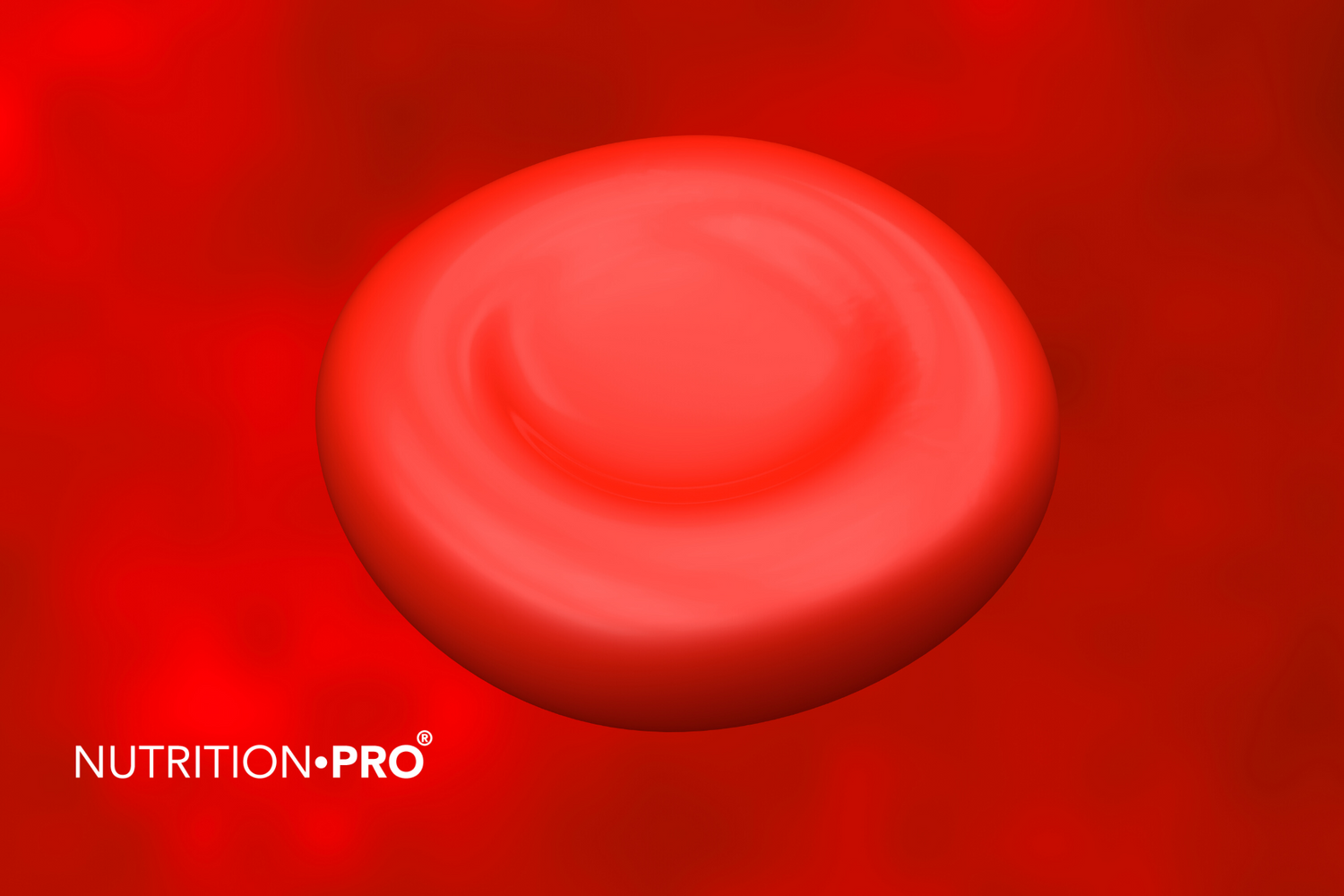What is anemia?
Anemia occurs when the number of healthy red blood cells in your body is too low. Red blood cells carry oxygen to all tissues in the body, so a low red blood cell count indicates that the amount of oxygen in your blood is less than it should be.
Many of the symptoms of anemia are caused by a decreased supply of oxygen to vital body tissues and organs.
Anemia is measured by the amount of hemoglobin , the protein in red blood cells that carries oxygen from the lungs to body tissues.
According to the WHO, anemia affects more than 1.6 billion people worldwide . Women and people with chronic conditions such as cancer are at the highest risk of developing anemia.
To fight effectively against anemia, discover our organic spirulina (powder or tablets) by clicking here .
What causes anemia?
Iron deficiency is the most common cause that causes anemia
Dietary iron, vitamin B-12 and folate are essential for the maturation of red blood cells in the body.
Normally, 0.8-1% of the body's red blood cells are replaced each day, and the average lifespan of red blood cells is 100-120 days. Any process that negatively affects this balance between the production and destruction of red blood cells can cause anemia .
The causes of anemia are generally divided into those that decrease red blood cell production and those that increase red blood cell destruction.
What factors can cause anemia?
Factors that typically decrease red blood cell production, causing anemia, include:
- Inadequate stimulation of red blood cell production by the hormone erythropoietin, which is produced by the kidneys
- Inadequate dietary intake of iron , vitamin B-12 , or folate
- hypothyroidism
On the other hand, any disorder that destroys red blood cells at a faster rate than they are made can cause anemia . This usually occurs due to hemorrhage , which can occur due to:
- Endometriosis
- Accidents
- Gastrointestinal lesions
- The period
- A delivery
- Excessive uterine bleeding
- An operation
- Cirrhosis , which involves scarring of the liver
- Fibrosis (scar tissue) in the bone marrow
- Hemolysis , rupture of red blood cells that can occur with certain drugs or Rh incompatibility
- Liver and spleen disorders
- Genetic disorders such as:
- Glucose-6-phosphate dehydrogenase (G6PD) deficiency
- Thalassemia
- sickle cell anemia
Overall, however, iron deficiency is the main factor causing anemia . It accounts for almost half of all cases of anemia and is a major nutritional disorder worldwide.
What are the daily nutritional requirements to fight anemia?
Daily vitamin and iron requirements vary by sex and age.
Women need more iron and folate than men due to iron losses during their menstrual cycle and fetal development during pregnancy and lactation.
The iron
According to the National Institutes of Health, the recommended daily iron intake for adults ages 19 to 50 is:
- For men: 8mg
- For women: 18mg
- During pregnancy: 27 mg
- During lactation: 9 mg
Men and women over 50 only need 8 milligrams (mg) of iron per day. A supplement may be needed if adequate iron levels cannot be acquired through diet alone.
Good sources of dietary iron include:
- spirulina
- Chicken and beef liver
- Turkey meat
- Red meats, such as beef
- Seafood
- Fortified cereals
- Oatmeal
- lentils
- Beans
- Spinach
Folate
Folate is the form of folic acid that occurs naturally in the body.
Men and women over the age of 14 need 400 micrograms of dietary folate equivalents (mcg/DFE) per day.
For pregnant or breastfeeding women, the recommended intake increases to 600 mcg/DFE and 500 mcg/DFE per day, respectively.
Here are examples of folate-rich foods :
- lentils
- Spinach
- The Great Northern Beans
- Asparagus
- Eggs
You can also add folic acid to your diet with fortified cereals and breads.
Vitamin B-12
The adult daily recommendation for vitamin B-12 is 2.4 mcg.
Pregnant women and teens need 2.6 mcg per day and those who are breastfeeding need 2.8 mcg per day.
Beef liver and clams are two of the best sources of vitamin B-12 . Other good sources include:
- Fish
- Meat
- Poultry
- Eggs
- other dairy products
Vitamin B-12 is also available in supplement form for those who don't get enough from their diet alone.
What are the symptoms of anemia?
People with anemia appear pale and may often complain of being cold .
Other symptoms of anemia:
- Dizziness or lightheadedness , especially active or standing
- Unusual food cravings
- Difficulty concentrating or fatigue
- Constipation
Certain types of anemia can cause inflammation of the tongue , resulting in a smooth, shiny, red, and often painful tongue.
If the anemia is severe , fainting may occur. Other symptoms include:
- Brittle nails
- shortness of breath
- Chest pain
Blood oxygen levels can be so low that a person with severe anemia can have a heart attack .
If you have a physical exam and you have anemia, your results may indicate:
- High or low blood pressure
- pale skin
- Jaundice
- An increased heart rate
- A murmur in the heart
- Enlarged lymph nodes
- An enlarged spleen or liver
- Atrophic glossitis of the tongue
People with signs or symptoms of anemia should seek medical attention, especially if they experience fainting or chest pain.
How is anemia diagnosed?
A diagnosis of anemia begins with your medical and family history , as well as a physical exam . A family history of certain types of anemia such as sickle cell anemia can be helpful.
A history of exposure to toxic agents at home or in the workplace may indicate an environmental cause.
Laboratory tests are often used to help doctors discover the cause of anemia.
Tests to diagnose anemia include:
- The complete blood count (FCS). The CBC blood test shows the number and size of red blood cells. It also shows whether the levels of other blood cells like white blood cells and platelets are normal.
- The serum iron level. This blood test shows whether iron deficiency is the cause of anemia.
- The ferritin test. This blood test analyzes iron stores.
- The vitamin B-12 test. This blood test shows vitamin B-12 levels and helps your doctor determine if they are too low.
- The folic acid test. This blood test reveals if serum folate levels are low.
- The stool test for occult blood. This test applies a chemical to a stool sample to see if blood is present. If the test is positive, it means that blood is being lost somewhere in the gastrointestinal tract, from the mouth to the rectum. Problems such as stomach ulcers , ulcerative colitis , and colon cancer can cause blood in the stool.
Additional tests
Based on the results of these tests, doctors may order additional tests such as:
- A higher GI
- A barium enema
- Chest x-rays
- A scan of your abdomen
How to treat anemia?
Treatment for anemia depends on its cause.
Anemia caused by insufficient amounts of dietary iron , vitamin B12, and folate is treated with nutritional supplements .
In some cases, injections of B12 are needed if it is not properly absorbed from the digestive tract.
In some cases, if the anemia is severe, doctors use erythropoietin injections to increase the production of red blood cells in the bone marrow. In case of bleeding or if the hemoglobin level is very low, a blood transfusion may be necessary.
Our food supplements such as our organic spirulina powder or our Multivitamins to ensure you get the recommended daily amount of iron.
Tell your doctor if you have symptoms of anemia, especially if you have a family history of it. Your doctor will likely start you on a diet or supplement regimen to increase your iron intake.
Iron deficiency can also be a sign of more serious medical issues, so it's important to take care of your body. In most cases, simply tweaking your diet with iron-rich foods or taking a supplement can resolve your anemia .















